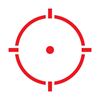Living With BUGs
Advanced - A specialized course on backup guns, their use, carry and background
Duration: 8 hours
Environment: In Person
$200.00
Fee
Frank Groth
| Date | Availability |
|---|
There are no upcoming classes scheduled for this course.
Description
In today's ever-evolving landscape of personal security, the use of backup firearms, known as BUGs, is a crucial skill for persons seeking to enhance their odds of survival in a worst case confrontation where their primary firearm is disabled or not available to them. This comprehensive course is designed to equip participants with the knowledge and practical skills necessary to effectively carry, draw, and utilize small revolvers or compact/micro-compact pistols in everyday situations and to deliver accurate, fight stopping, shots. Given their tiny size, backup firearms can be more difficult to shoot, and to shoot accurately
This course is suitable for armed professionals, including law enforcement and security personnel, as well as private citizens who wish to enhance their preparedness for self-defense situations. Participants should possess a clear understanding of firearms safety and handling, and will have previously completed

Topics Covered
- Understanding Backup Guns: Gain an in-depth understanding of the role and advantages of backup firearms, specifically small revolvers and compact pistols, in personal defense scenarios.
- Selection and Carrying Methods: Learn how to select the appropriate backup gun for your needs, including considerations such as size, caliber, and capacity. Discussion will include the various methods of carry, emphasizing comfort, accessibility, and concealment.
- Holster Selection and Placement: Explore the essential criteria for choosing the right holster for your backup gun, focusing on factors such as material, retention features, and draw speed. Participants will also learn about various holster placements and how to modify their carry style for deep concealment.
- Drawing from Deep Concealment: Master techniques for drawing your backup firearm from deep concealment, ensuring a smooth and efficient draw under stress. Participants will practice methodologies that prioritize safety and speed, preparing for real-world scenarios.
- Situational Awareness and Mindset: Develop an understanding of situational awareness and the mindset required for effective personal defense. This includes recognizing potential threats and making informed decisions about when and how to access and use a backup firearm.
- Shooting Exercises: Engage in both dry live fire exercises designed to apply the fundamentals of marksmanship to the compact firearm and to reinforce the skills learned in class. Participants will have the opportunity to practice drawing and firing from various positions and scenarios.

Expectations and Outcomes
At the end of this course the successful student will:
- Understand the various options of back up guns available
- Understand the pros and cons of different action types, particularly in grounded or entangled situations
- Understand the pros and cons of carry different holster placements
- Be able to determine their own best practices for carrying a backup gun based on their own context
- Complete a live fire qualification exercise

Types
Advanced, Concealed Carry Training, LEO / MIL / SEC Courses, Specialty Other

Requirements
Students will need to bring
- Compact or microcompact pistol
- Caliber .380 ACP or greater are acceptable
- At least two magazines
- Examples include S&W Bodyguard 2.0, Ruger LCP, Springfield Armory Hellcat, Glock 43x
- Revolver
- Caliber 22 LR or greater
- Reloading tools, i.e. speed loader or speed strips
- Example guns, S&W J frames with concealed hammer, such as Model 43c 640, 442, 432UC, etc, Ruger LCP are preferred. Revolvers with exposed hammers are best when the hammer spur has been removed.
- Holster
- Holster must be made specific to the gun being carried in it
- Leather or Kydex
- Pocket, ankle, or deep cover such as Phlster Engima system are all acceptable
- The student may want to bring more than one style of holster to spend time on different methods of carry
- A ball cap or hat and sunscreen
- Elbow and knee pads may be used as we will cover drawing from disadvantaged and compromised positions
- Eye and ear protection, electronic hearing protection is preferable
- Wyoming weather is unpredictable, have extra layers available (we train rain or shine)
- A cooler with soft drinks, water, snacks and lunch will be needed, for a working lunch on site. We will not be leaving the campus for lunch
